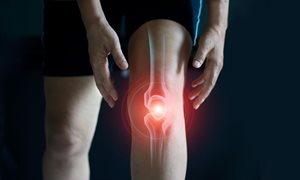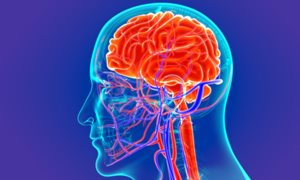
Fewer gallbladder surgeries for abdominal pain and gallstones seems like a good idea, as one-third of patients still have symptoms a year after surgery. Dutch research, coordinated by the Radboudumc and published in JAMA Surgery, shows how the patient and the surgeon can make a better choice for gallbladder surgery.
The large patient group of 100,000 people with abdominal complaints who report to their general practitioner each year includes approximately 30,000 patients with gallstones. The standard treatment for gallstone suffering is removal of the gallbladder via keyhole surgery. This is one of the most frequently performed operations in the Netherlands, but it is not always effective in combating pain: about one third of patients continue to suffer from abdominal pain after gallbladder removal.
Restrained policy
Philip de Reuver, a surgeon at the Radboudumc, and his Dutch colleagues therefore investigated whether it would be better to select patients who would or would not benefit from gallbladder surgery before surgery. Based on previous research, published in The Lancet in 2019, the authors already advised some restraint when it comes to gallbladder removal in this patient group.
Fewer surgeries
The article in the Lancet shows that the restrictive, restrained policy reduced the percentage of patients operated on (from over 75 to 68 percent). De Reuver: "That in itself is positive. But if we look at the total group, the number of patients who are pain free after one year does not decrease. Possibly the restrictive policy even leads to a small increase in the number of patients who still have pain."
New research
The expectation beforehand was that a restrictive policy could reduce the number of patients with pain complaints, because patients would ultimately receive the best treatment through such a tailored approach. De Reuver: "We have to conclude that the restrictive approach does not solve the problem. Nor does the gall bladder removal, because a year after the procedure about forty percent still have symptoms. There was a need for new research asking which patient, with which type of symptoms, benefits most from gallbladder surgery."
Choosing better
In the follow-up study, recently published in JAMA Surgery, the researchers have now developed a tool that helps predict whether a patient will be pain-free after surgery. Over 1,000 patients with abdominal pain and gallstones in more than 24 Dutch hospitals participated in this study between 2014 and 2017. The analysis of all patient data and the pattern of complaints before and after surgery led to a validated decision aid. The analysis of all patient data and their pattern of complaints before and after the operation led to a validated decision aid. De Reuver: "The decision aid, available online, can properly inform the patient and the surgeon about the chance that the patient will be pain free after surgery. This makes the joint decision-making process before surgery even better."
Publication in JAMA Surgery: A Clinical Decision Tool for Selection of Patients With Symptomatic Cholelithiasis for Cholecystectomy Based on Reduction of Pain and a Pain-Free State Following Surgery - Carmen S. S. Latenstein MD, Gerjon Hannink PhD, Jarmila D. W. van der Bilt MD, PhD, Sandra C. Donkervoort MD, PhD, Quirijn A. J. Eijsbouts MD, PhD, Joos Heisterkamp MD, PhD, Vincent B. Nieuwenhuijs MD, PhD, Jennifer M. J. Schreinemakers MD, PhD, Bastiaan Wiering MD, PhD, Marja A. Boermeester MD, PhD, Joost P. H. Drenth MD, PhD, Cornelis J. H. M. van Laarhoven MD, PhD, Marcel G. W. Dijkgraaf PhD, Philip R. de Reuver MD, PhD
-
Want to know more about these subjects? Click on the buttons below for more news.
Related news items

Meniscus prosthesis Atro Medical receives 2.5 million EU grant
10 June 2022 The European Commission is providing a 2.5 million euro grant to ATRO Medical, spin-off of The Radboudumc and DSM, for the accelerated development of their artificial meniscus. go to page
More accurate surgery with the Anatomy Projector
30 May 2022The Anatomy Projector, developed at the Radboudumc, allows surgeons to operate much more accurately with projected augmented reality.
go to page
The future of laboratory animal research More attention to living conditions of laboratory animals
16 May 2022 On May 9, a meeting took place at the Radboudumc as a result of the launch of the Dutch Transparency Agreement on Animal Testing. The Radboudumc is one of the twenty signatories and has thus committed itself to openly and transparently communicate its vision and policy with regard to animal testing. go to page
Promising research on Usher syndrome
29 March 2022 Erwin van Wijk, researcher at Hearing and Genes, wants to contribute to making Usher syndrome treatable. The results so far are better than he had dared to hope. go to page

